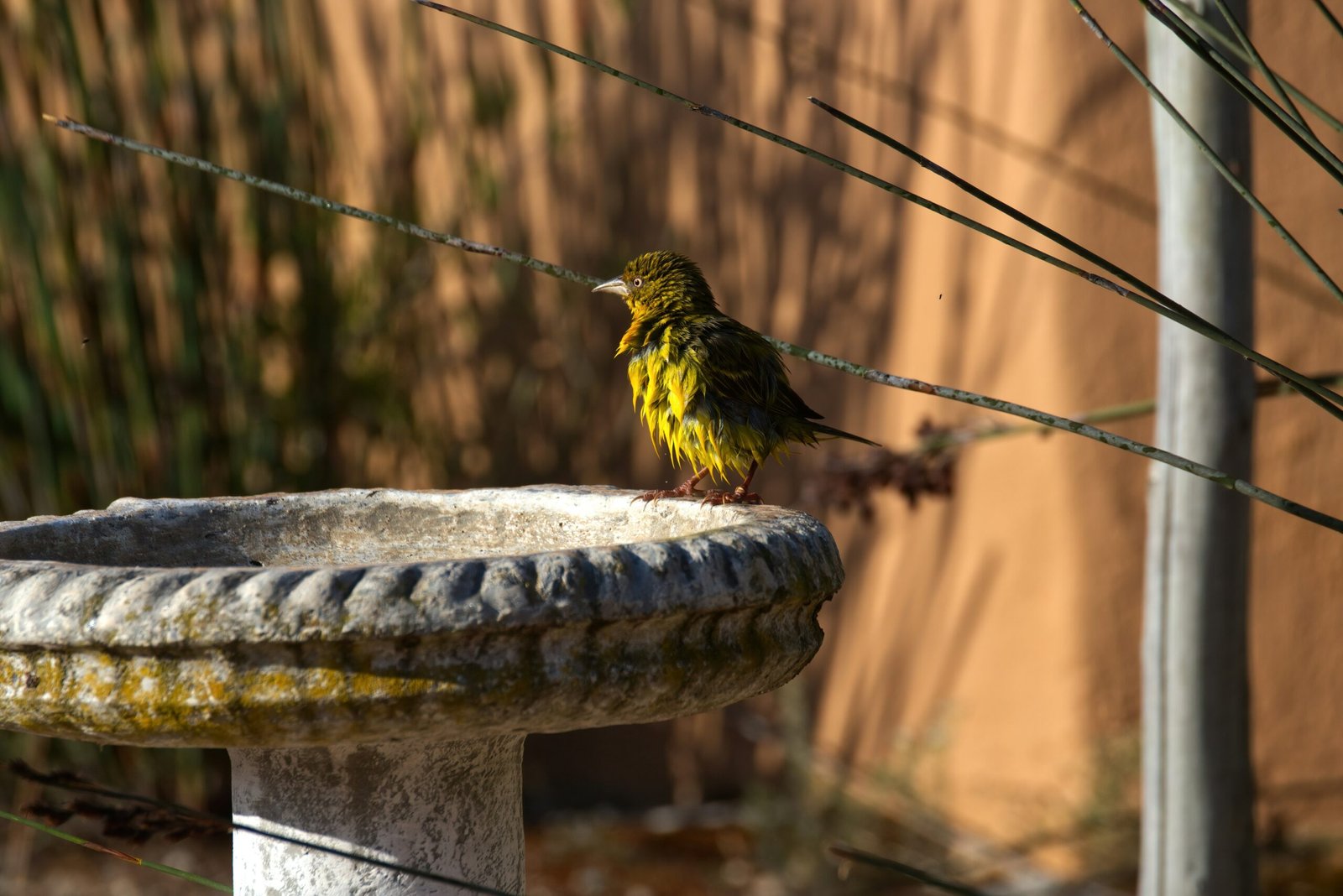Chinese Wisteria, also known as Wisteria sinensis, is a climbing vine that is prized for its beautiful cascades of fragrant flowers. This fast-growing and hardy vine is not only an ornamental plant but also a popular choice for pergola decoration and garden trellis. However, it is important to note that all parts of the plant contain toxic substances, so caution must be exercised when handling it.
- Proper location: Choose a spot with full sun and well-draining soil for planting Chinese Wisteria.
- Care and maintenance: Apply compost and mulch, water regularly, cut back rampant shoots, and prune for better flowering.
- Native alternatives: Consider American Wisteria or Kentucky Wisteria as non-invasive alternatives to Chinese Wisteria.
- Common issues: Address lack of flowering, powdery mildew, and pests like the Wisteria borer with appropriate solutions.
- Propagation methods: Choose growing from seed, purchasing established plants, or starting from cuttings when propagating Chinese Wisteria.
Table of Contents
ToggleChoosing the Right Location and Planting Chinese Wisteria
To plant Chinese Wisteria, it is important to choose a location that receives full sun and has well-draining soil. This will provide the ideal conditions for the vine to thrive and produce its stunning cascades of blue to purple flowers. Chinese Wisteria is a vigorous climber, so it needs a sturdy structure such as a pergola or trellis for support.
Before planting, prepare the soil by ensuring it is loose, fertile, and well-draining. If the soil is heavy or compacted, add organic matter such as compost to improve its drainage capabilities. Chinese Wisteria prefers slightly acidic soil with a pH level between 6 and 7.
When it comes to the timing of planting, it is recommended to do so in the spring or fall while the plant is dormant. This allows the Wisteria to establish its root system before the onset of extreme weather conditions. While Wisteria can be grown from seeds, it is often easier and more reliable to purchase established plants from local nurseries or start from cuttings.
Propagation Methods for Chinese Wisteria
If you choose to propagate Chinese Wisteria from cuttings, select healthy, young shoots from the parent plant. Take cuttings measuring approximately 6-8 inches in length and remove the lower leaves. Place the cuttings in a well-draining potting mix and keep them moist until they develop roots. Once the cuttings have rooted, they can be transplanted into the desired location in the garden.
When planting Chinese Wisteria, be mindful of its vigorous growth habit and potential invasiveness in some regions. To prevent the vine from spreading uncontrollably and damaging native ecosystems, consider using barriers such as root pruning or planting Wisteria in containers. It is also important to be aware of the potential toxicity of all parts of the Wisteria plant and handle it with caution.

To plant Chinese Wisteria, it is important to choose a location that receives full sun and has well-draining soil. This provides the ideal conditions for the vine to flourish and produce its breathtaking cascades of blue to purple flowers. Chinese Wisteria is a hardy and fast-growing vine, but it requires proper care and maintenance for optimal growth. By selecting the right location and following the correct planting techniques, you can enjoy the beauty of Chinese Wisteria in your garden or landscape.
| Planting Chinese Wisteria Checklist | |
|---|---|
| Choose a location that receives full sun | ✔ |
| Ensure well-draining soil | ✔ |
| Prepare the soil with compost | ✔ |
| Plant in spring or fall | ✔ |
| Consider established plants or cuttings | ✔ |
| Use barriers to prevent invasiveness | ✔ |
| Exercise caution due to plant toxicity | ✔ |
In conclusion, choosing the right location and proper planting techniques are essential for successfully growing Chinese Wisteria. Providing full sun and well-draining soil, along with using established plants or cuttings, will help ensure the vine’s optimal growth. It is important to be mindful of the potential invasiveness of Chinese Wisteria in some regions and take precautions to prevent its spread. Additionally, exercise caution when handling the plant due to its toxicity. By following these guidelines, you can enjoy the beauty of Chinese Wisteria in your garden or landscape.
Caring for Chinese Wisteria: Tips and Techniques
Caring for Chinese Wisteria involves several key steps to ensure its optimal growth and profuse blooming. By following these tips and techniques, you can enjoy the beauty and fragrance of this stunning climbing vine.
- Compost and Mulch: Applying compost and mulch in the spring provides essential nutrients and helps retain moisture in the soil, promoting healthy growth. Spread a layer of compost around the base of the plant and cover it with a thick layer of mulch.
- Watering: Chinese Wisteria requires regular watering, especially during dry spells or if there’s a lack of rainfall. Water deeply, ensuring the soil is moist but not waterlogged. Avoid overwatering, as this can lead to root rot.
- Cutting Back Shoots: To encourage more blooms, cut back any rampant shoots during the summer. This directs the plant’s energy towards flower production. Be careful not to prune too heavily, as this can inhibit flowering.
- Pruning: Pruning is essential for Chinese Wisteria to bloom abundantly. Since it only blooms on new wood, pruning is necessary to stimulate new growth. The best time to prune is in July or after the flowers have faded. Remove any dead, damaged, or overcrowded branches to maintain a healthy and attractive shape.

It’s important to note that over-fertilizing Chinese Wisteria can lead to excessive foliage growth at the expense of flowers. Avoid using too much nitrogen-rich fertilizer, as this can result in lush foliage but fewer blooms. Follow the instructions provided with your chosen fertilizer and only apply it in moderation.
“Caring for Chinese Wisteria involves applying compost and mulch, providing regular watering, cutting back shoots, and implementing proper pruning techniques for optimal growth and profuse blooming.”
Maintaining Healthy Chinese Wisteria
Chinese Wisteria, like any other plant, can be susceptible to certain issues. Here are additional care tips to help maintain a healthy and thriving Chinese Wisteria:
- Lack of Flowering: If your Chinese Wisteria isn’t flowering, it may be due to insufficient sunlight or improper pruning. Make sure the plant receives at least six hours of full sun daily, and follow proper pruning techniques to encourage flower production.
- Powdery Mildew: Powdery mildew is a fungal disease that can affect Chinese Wisteria. To prevent it, ensure good air circulation around the plant and avoid overwatering. If powdery mildew appears, treat it with a suitable fungicide.
- Pests: The Wisteria borer is a common pest that can damage Chinese Wisteria. Regularly inspect the plant for signs of infestation, such as holes in the stems or discolored foliage. Use appropriate insecticides or consult with a professional for effective pest control.
By following these care tips and techniques, you can enjoy the beauty and fragrance of Chinese Wisteria in your garden. Remember to choose the right location, provide proper care, and be mindful of its invasiveness in certain regions. With attention and care, Chinese Wisteria can be a stunning addition to any landscape.
Different Varieties of Wisteria
There are several varieties of Wisteria available, including Chinese, Japanese, American, and Kentucky Wisteria, each with its own characteristics. Chinese Wisteria (Wisteria sinensis) is a popular choice known for its cascades of blue to purple flowers, making it a stunning addition to any garden or landscape. However, it is important to exercise caution when planting Chinese Wisteria, as all parts of the plant contain toxic substances.
Japanese Wisteria (Wisteria floribunda) is another beautiful variety that produces longer clusters of flowers compared to Chinese Wisteria. The flowers range in color from white to lavender and have a lovely fragrance. American Wisteria (Wisteria frutescens) and Kentucky Wisteria (Wisteria macrostachya) are non-invasive alternatives to the Chinese and Japanese varieties, making them a safer choice for landscaping.
| Variety | Characteristics |
|---|---|
| Chinese Wisteria | Invasive; known for cascades of blue to purple flowers; toxic |
| Japanese Wisteria | Longer flower clusters; white to lavender flowers with a pleasant fragrance |
| American Wisteria | Non-invasive; suitable for landscaping |
| Kentucky Wisteria | Non-invasive; ideal for landscapes and trellises |
Chinese Wisteria is considered an invasive species in some states, so it is recommended to choose native alternatives like American Wisteria or Kentucky Wisteria, which offer similar beauty without the risk of spreading uncontrollably.

When selecting a variety of Wisteria, it is important to consider the invasive nature of certain varieties and the potential impact on the environment. Native alternatives like American Wisteria and Kentucky Wisteria can provide all the beauty without the concern of their spread. Regardless of the variety chosen, proper care and maintenance, including regular pruning and attention to watering and fertilizing, will ensure a healthy and thriving Wisteria vine.
Common Issues and Solutions for Chinese Wisteria
While Chinese Wisteria is generally a resilient plant, it can face certain challenges, including issues with flowering and susceptibility to powdery mildew and pests.
One common issue that gardeners may encounter with Chinese Wisteria is a lack of flowering. This can be caused by several factors, including improper pruning or insufficient sunlight. To encourage blooming, it is essential to prune the plant correctly and at the right time. Chinese Wisteria blooms on new wood, so it is recommended to prune in July or after the flowers have faded. Additionally, make sure the plant receives at least six hours of direct sunlight daily to promote healthy flowering.
Powdery mildew is another common problem that can affect Chinese Wisteria. This fungal infection appears as a white, powdery coating on the leaves, stems, and flowers of the plant. To prevent powdery mildew, ensure proper air circulation around the plant by pruning any crowded or overgrown branches. If powdery mildew does occur, treat the affected areas with a fungicidal spray specifically designed for powdery mildew.
Pests such as the Wisteria borer can also pose a threat to Chinese Wisteria. These insects lay their eggs on the stems, and their larvae burrow into the wood, causing damage. To prevent infestations, inspect the plant regularly for signs of borer activity, such as holes or sawdust-like frass. If infestation is detected, remove and destroy the affected stems to prevent further spread. Applying a suitable insecticide can also help control these pests.
| Issue | Solution |
|---|---|
| Lack of flowering | Proper pruning and adequate sunlight |
| Powdery mildew | Prune for air circulation and apply fungicidal spray |
| Pests (Wisteria borer) | Inspect regularly and remove affected stems, apply insecticide if necessary |
In conclusion,
Chinese Wisteria may face challenges in terms of flowering, susceptibility to powdery mildew, and pests like the Wisteria borer. However, with proper care and attention, these issues can be prevented or effectively managed. Pruning at the right time, providing adequate sunlight, promoting good air circulation, and using appropriate treatments can help ensure the health and beauty of your Chinese Wisteria. By addressing these common issues and implementing the recommended solutions, you can enjoy a thriving and vibrant Chinese Wisteria in your garden.

In areas where Chinese Wisteria is invasive, it is advisable to explore native alternatives, such as American Wisteria or Kentucky Wisteria. These native varieties offer similar beauty and charm while being less aggressive in their growth habits.
American Wisteria (Wisteria frutescens) is a deciduous climbing vine native to the United States. It features clusters of fragrant, lilac-colored flowers that bloom in late spring to early summer. Unlike Chinese Wisteria, American Wisteria blooms on both old and new wood, ensuring abundant flowers even after harsh winters.
Kentucky Wisteria (Wisteria macrostachya) is another excellent alternative. This variety is known for its stunning bluish-purple flowers that grow in elongated hanging clusters. Like American Wisteria, Kentucky Wisteria is less invasive and more suitable for landscaping purposes.
Comparison Table: Chinese Wisteria, American Wisteria, and Kentucky Wisteria
| Variety | Key Characteristics | Invasiveness | Landscape Suitability |
|---|---|---|---|
| Chinese Wisteria | Cascades of blue to purple flowers, fast-growing vine | Invasive in some states | May overtake other plants if not managed |
| American Wisteria | Fragrant, lilac-colored flowers, blooms on old and new wood | Non-invasive | Safe choice for landscaping |
| Kentucky Wisteria | Bluish-purple flowers in elongated clusters | Non-invasive | Attractive option for gardens and arbors |
By choosing American Wisteria or Kentucky Wisteria instead of Chinese Wisteria, you can enjoy the beauty and benefits of this charming vine without contributing to its invasive spread. Native alternatives not only add a touch of natural diversity to your landscape but also support the local ecosystem and require less maintenance in the long run.

Note: The image above showcases the beauty of American Wisteria and Kentucky Wisteria.
Pruning Techniques for Chinese Wisteria
Proper pruning techniques are crucial for maintaining the health and aesthetics of Chinese Wisteria. Pruning helps control the growth of this fast-growing vine and encourages better flowering. Timing is essential when it comes to pruning Wisteria. It is best to prune in July or after the flowers have faded to ensure optimal results.
Start by removing any dead or damaged wood, as well as any weak or crossing branches. This helps improve air circulation and prevents the development of disease. To promote flowering, prune back long shoots to about 6 inches, leaving just a few buds. This encourages the growth of new wood, which is where Wisteria produces its blooms.
Be careful not to over-prune, as this can lead to a lack of flowering. Wisteria blooms on new wood, so it is important to strike a balance between pruning and allowing the vine to grow and develop. Remember to always use sharp and clean pruning tools to minimize damage to the plant.
Pruning Tips for Chinese Wisteria:
- Prune in July or after the flowers have faded to encourage better flowering.
- Remove dead, damaged, or weak wood to improve air circulation and prevent disease.
- Prune back long shoots to about 6 inches to promote the growth of new wood.
- Avoid over-pruning to ensure a healthy balance between growth and flowering.
By following these pruning techniques, you can help your Chinese Wisteria thrive and showcase its stunning cascades of fragrant flowers. Remember to always consult specific care instructions for your individual plant, as variations in climate and growing conditions may require slight adjustments to the pruning schedule.

- Chinese Wisteria: A Comprehensive Guide to Care and Maintenance by GardeningExpert
- Wisteria sinensis (Chinese Wisteria) by Missouri Botanical Garden
- Pruning Wisteria by Clemson Cooperative Extension
The Toxicity of Chinese Wisteria
It is essential to be aware of the toxic nature of Chinese Wisteria and take necessary precautions when planting and interacting with the plant. All parts of the Wisteria sinensis contain toxic substances, which can be harmful if ingested or if there is direct contact with the sap. While the flowers are visually stunning, it is important to handle them with caution.

When planting Chinese Wisteria, it is advisable to wear gloves and protective clothing to prevent any potential skin irritation. If any part of the plant is ingested, even in small quantities, it can cause various symptoms such as nausea, vomiting, abdominal pain, and diarrhea. In severe cases, it may lead to more serious health issues.
Always keep Chinese Wisteria out of reach of children and pets, as they may be tempted to touch or consume the plant. If someone accidentally ingests any part of the plant, it is important to seek immediate medical advice and inform the healthcare professional about the specific plant ingested.
By understanding the toxicity of Chinese Wisteria and taking the necessary precautions, you can enjoy the beauty of this ornamental plant while ensuring the safety of yourself, your loved ones, and the environment.
Benefits and Uses of Chinese Wisteria
Chinese Wisteria offers numerous benefits and can be used in various ways to enhance the beauty of gardens and outdoor structures. With its cascades of blue to purple flowers, it creates a stunning visual display that adds a touch of elegance and charm to any landscape. Whether grown on garden trellises, pergolas, or used as a standalone ornamental plant, Chinese Wisteria adds a sense of romance and tranquility to outdoor spaces.
One of the key benefits of Chinese Wisteria is its fast-growing nature, making it an excellent choice for quickly covering unsightly structures or creating shade. As a hardy vine, it can withstand a range of conditions and adds a vertical element to garden designs. Its fragrant flowers also attract pollinators, adding life and movement to the garden environment.
When properly maintained, Chinese Wisteria can thrive for many years, bringing joy and beauty to your outdoor spaces. However, it is important to note that Chinese Wisteria is considered an invasive species in some states. Therefore, it is crucial to exercise caution and consider native alternatives like American Wisteria or Kentucky Wisteria, especially in regions where controlling the spread of invasive species is a concern.
Table: Comparing Chinese Wisteria and Native Alternatives
| Variety | Invasiveness |
|---|---|
| Chinese Wisteria | Invasive |
| American Wisteria | Non-invasive |
| Kentucky Wisteria | Non-invasive |
By choosing native alternatives, you not only support the local ecosystem but also help preserve the natural balance of your surroundings. Native varieties are adapted to the local climate and require less maintenance, making them a sustainable and responsible choice for garden enthusiasts.

“Chinese Wisteria offers a stunning display of cascading flowers, making it a popular choice for garden decoration.”
In summary, Chinese Wisteria can be a beautiful addition to any garden, offering a range of benefits and uses. However, it is important to be mindful of its invasiveness in certain regions and consider native alternatives when planning your garden. With proper care and maintenance, Chinese Wisteria can transform your outdoor space into a serene and enchanting oasis.
Propagation Methods for Chinese Wisteria
Chinese Wisteria can be propagated using several methods, offering flexibility in how it can be grown and established. One common method is growing from seed. Collect mature seed pods from an existing Wisteria plant and extract the seeds. Soak the seeds in water for 24 hours to soften the hard coating before sowing them in pots filled with well-draining soil. Keep the soil consistently moist and place the pots in a warm, sunny location. Germination may take a few weeks, and once the seedlings have developed several sets of leaves, they can be transplanted into the garden.
Another propagation method is through established plants. This involves purchasing a young Wisteria plant from a reputable nursery or garden center. Look for plants that have a strong, healthy root system and well-developed shoots. Plant the Wisteria in a prepared hole in the garden, ensuring that the root ball is level with the soil surface. Water thoroughly and provide support, such as a trellis or pergola, for the plant to climb on.
Using cuttings is another effective way to propagate Chinese Wisteria. Take softwood cuttings in late spring or early summer, selecting young, vigorous stems that are approximately 4 to 6 inches long. Remove the lower leaves and dip the cut end in rooting hormone to encourage root development. Plant the cuttings in a mixture of sand and peat moss, keeping them in a warm, humid environment. After a few weeks, the cuttings will develop roots and can be transplanted into individual pots or directly into the garden.
Propagation Methods Summary
- Growing from seed by soaking the seeds and sowing them in pots
- Purchasing established plants and transplanting them into the garden
- Taking softwood cuttings, treating them with rooting hormone, and planting in a suitable medium
By utilizing these propagation methods, you can successfully grow and establish Chinese Wisteria in your garden. Whether you choose to grow from seed, purchase established plants, or start from cuttings, you’ll have the flexibility to propagate and cultivate this beautiful vine to enhance your outdoor space.
| Propagation Method | Advantages | Disadvantages |
|---|---|---|
| Growing from seed | Low cost, large quantity of plants | Long germination period, variability in seedling quality |
| Established plants | Immediate growth and flowering | Higher expense, limited availability |
| Cuttings | Genetically identical to parent plant, faster establishment | Requires more care and maintenance, variable success rate |

Chinese Wisteria, while beloved for its beauty, is considered an invasive species in certain areas of the United States. Its aggressive growth and ability to displace native vegetation have raised concerns among conservationists and gardeners alike. As a result, it is important to be mindful of the potential invasiveness when considering the cultivation of Chinese Wisteria.
In states where Chinese Wisteria is classified as invasive, it is recommended to opt for native alternatives such as American Wisteria or Kentucky Wisteria. These varieties offer similar cascades of fragrant flowers and ornamental value without the risk of ecological harm. By choosing native alternatives, we can help protect and preserve local ecosystems.

When deciding on which variety of Wisteria to plant, it is essential to research and understand the specific regulations and recommendations in your area. Check with local gardening authorities, extension offices, or native plant societies to stay informed about invasive species and responsible plant choices.
By making informed decisions and selecting the appropriate variety for your region, we can enjoy the beauty of Wisteria while minimizing the negative impact on our natural surroundings.
Conclusion
Chinese Wisteria is a stunning vine that can add beauty to any garden, but it requires proper care and maintenance to thrive, and it is essential to be mindful of its potential invasiveness. As a high-climbing vine, Chinese Wisteria is known for its cascades of blue to purple flowers, making it a popular choice for pergola decoration and ornamental plantings.
When planting Chinese Wisteria, it is important to select a location with full sun and well-draining soil. Spring or fall is the ideal time to plant, while the plant is dormant. While Wisteria can be grown from seed, it is recommended to purchase established plants or start from cuttings for a more reliable outcome.
Caring for Chinese Wisteria involves regular application of compost and mulch in the spring, as well as adequate watering, especially during periods of low rainfall. Cutting back rampant shoots during the summer promotes better flowering, as Wisteria blooms on new wood. Pruning should be done in July or after the flowers have faded. However, it is crucial not to over-fertilize the plant, as excessive nitrogen can cause problems.
It is worth mentioning that there are different varieties of Wisteria available, including Chinese, Japanese, American, and Kentucky. While Chinese and Japanese Wisteria are considered invasive species, American Wisteria and Kentucky Wisteria are non-invasive alternatives that are suitable for landscaping purposes. When choosing Wisteria for your garden, it is important to consider the specific variety and its potential impact on local ecosystems.
Lastly, it is important to be aware of common issues that may arise when caring for Chinese Wisteria, such as lack of flowering, powdery mildew, and pests like the Wisteria borer. By addressing these issues promptly and following proper care practices, Chinese Wisteria can thrive and become a beautiful addition to any garden.
FAQ
Is Chinese Wisteria toxic?
Yes, all parts of the plant contain toxic substances, so caution should be exercised when planting and handling Chinese Wisteria.
Is Chinese Wisteria considered invasive?
Yes, Chinese Wisteria is considered an invasive species in some states. It is recommended to choose native alternatives like American Wisteria or Kentucky Wisteria.
When is the best time to plant Wisteria?
It is best to plant Wisteria in the spring or fall while the plant is dormant.
How do I care for Wisteria?
Caring for Wisteria involves applying compost and mulch in the spring, watering regularly if rainfall is insufficient, and pruning in July or after the flowers have faded.
Does Wisteria only bloom on new wood?
Yes, Wisteria only blooms on new wood, so pruning is essential for good flowering.
How can I prevent over-fertilizing Wisteria?
Over-fertilizing Wisteria can cause problems, so it is important to follow instructions and not use too much nitrogen.
Are there different varieties of Wisteria?
Yes, there are different varieties of Wisteria, including Chinese, Japanese, American, and Kentucky Wisteria.
What are the common issues with Wisteria?
Common issues with Wisteria include lack of flowering, powdery mildew, and pests like the Wisteria borer.
Is American Wisteria a good alternative to Chinese Wisteria?
Yes, American Wisteria is a non-invasive alternative to Chinese Wisteria, suitable for landscaping purposes.
When should I prune Chinese Wisteria?
It is recommended to prune Chinese Wisteria in July or after the flowers have faded.
Can I grow Wisteria from seed?
Yes, Wisteria can be grown from seed, but it is recommended to purchase established plants or start from cuttings for better results.
Why is Chinese Wisteria considered an invasive species?
Chinese Wisteria is considered invasive due to its aggressive growth and ability to outcompete native plants, causing ecological harm in certain regions.
What are the benefits and uses of Chinese Wisteria?
Chinese Wisteria offers fragrant and beautiful flowers, making it an ideal garden decoration and suitable for enhancing structures like pergolas and trellises.











